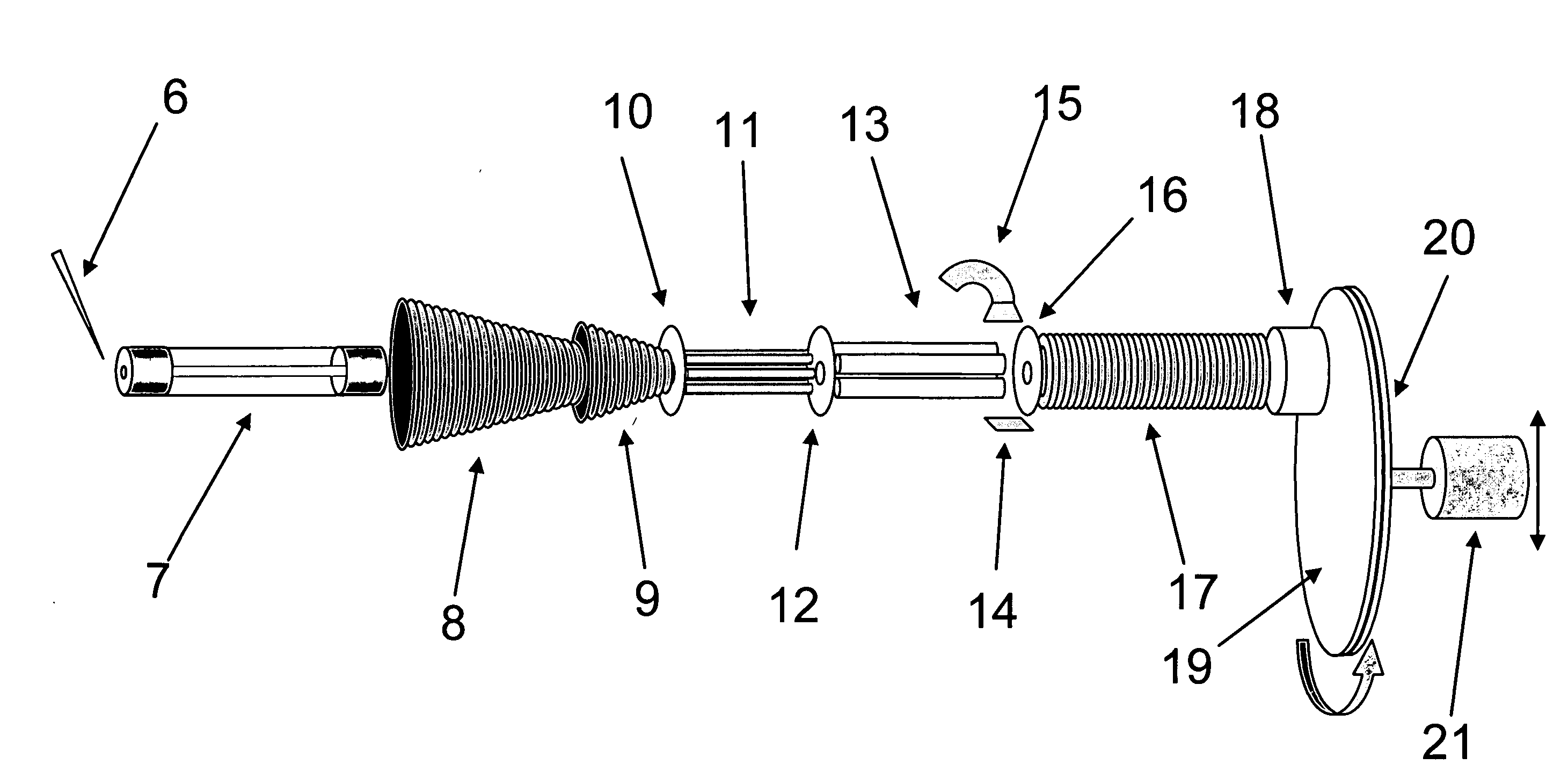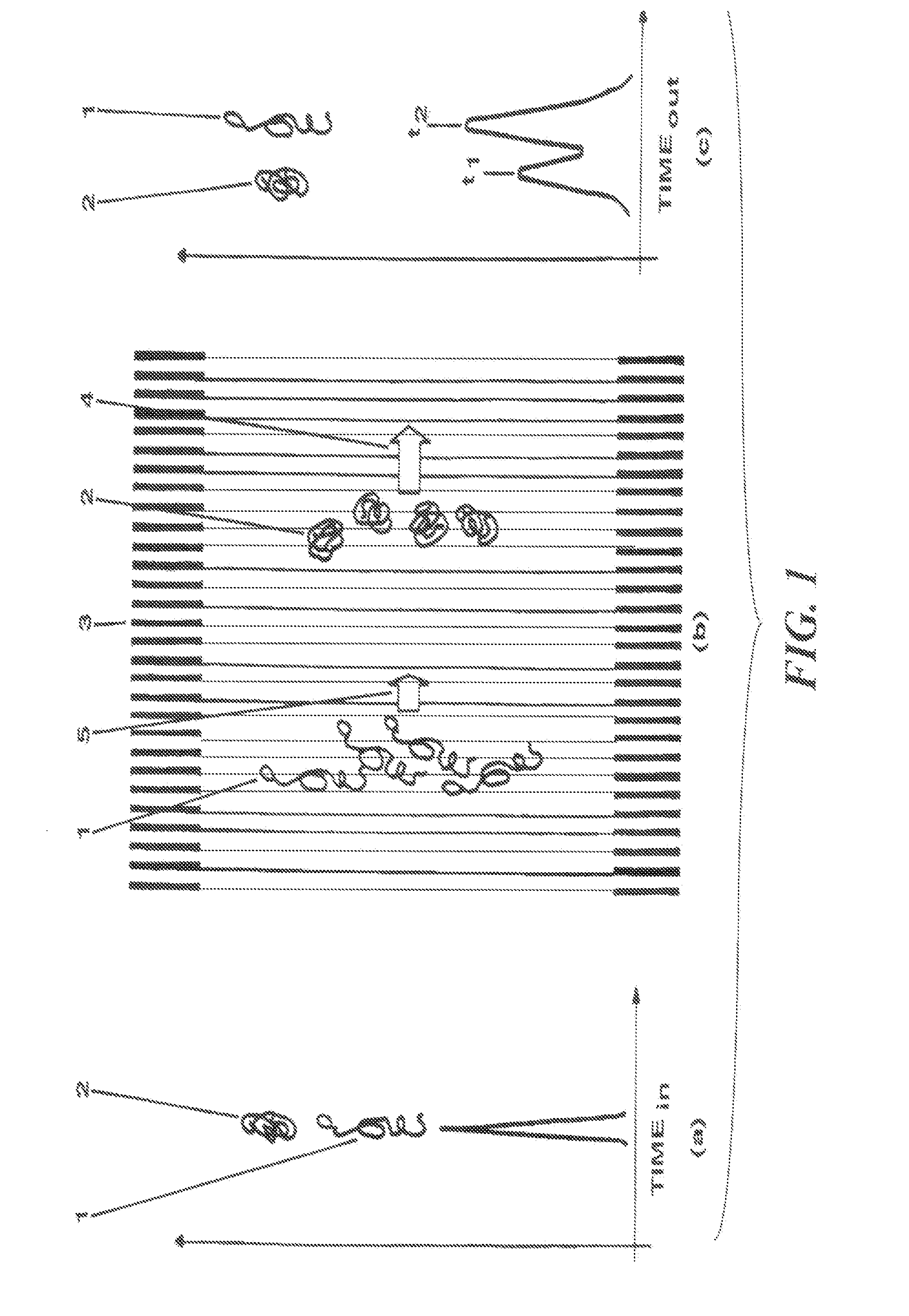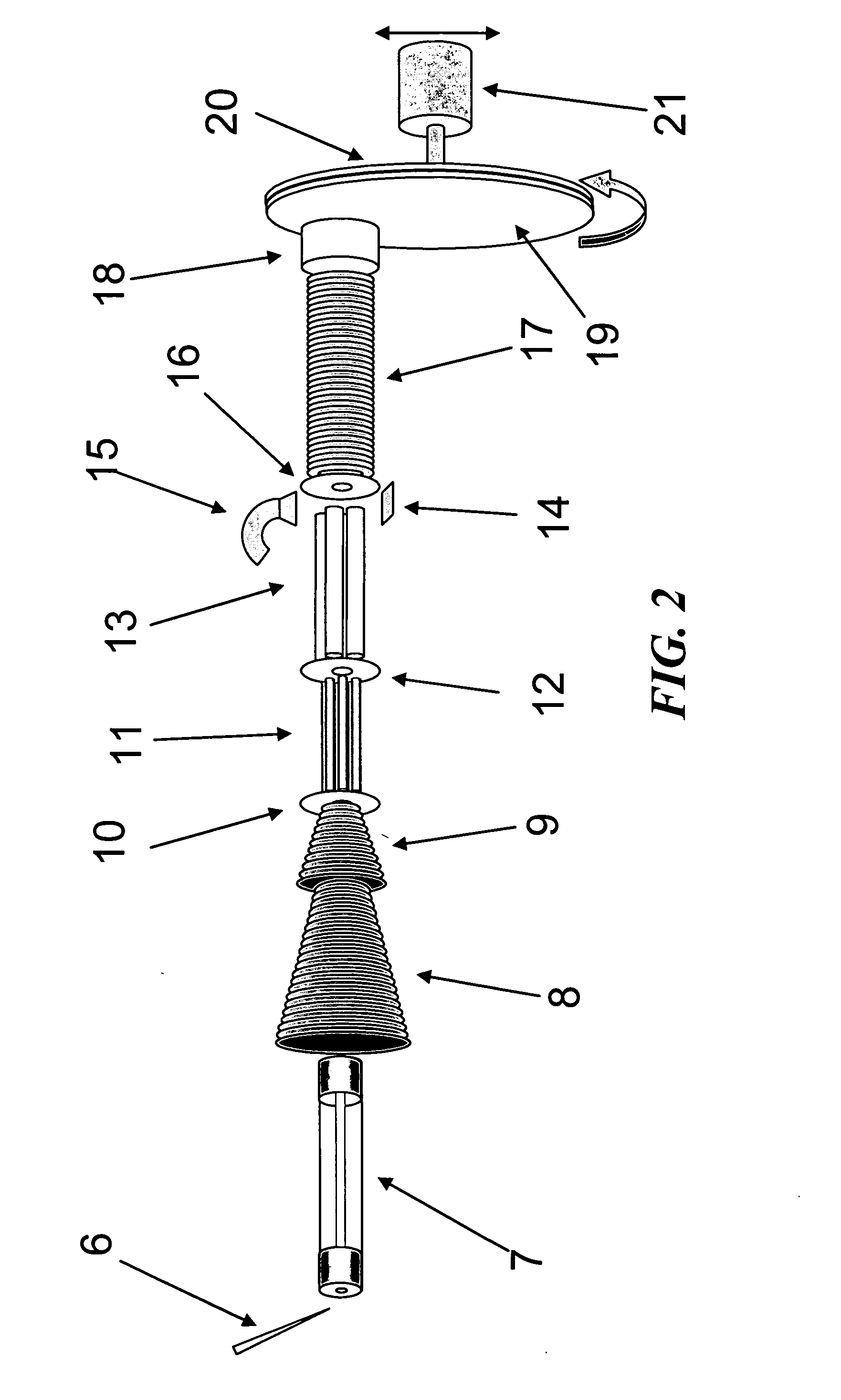Preparative ion mobility spectrometry
a technology of ion mobility and spectrometry, which is applied in the field of ion mobility spectrometry, can solve the problems of difficult particular modifications, limited mass spectrometers, and difficulty in structural characterization of various isoforms of large proteins
- Summary
- Abstract
- Description
- Claims
- Application Information
AI Technical Summary
Benefits of technology
Problems solved by technology
Method used
Image
Examples
Embodiment Construction
[0034]The present invention separates the tasks of ion mobility separation and the mass spectrometric detection. These two tasks are performed in two separate instruments in order to solve the vacuum system-related problems of mass spectrometry. Dividing ion mobility separation and analysis into two separate instruments also eliminates all problems related to time limitations in detection. Additionally, in the present invention ions are generated and mobility-separated in a cell under ideal conditions of ion mobility spectrometry. At the end of this operation, separated ions are deposited by soft landing on a receiver, which is a sample holder for the analysis of the deposited ions. As the ion mobility spectrometer is separated from the analysis system, both the ion mobility spectrometer and the analysis system can operate under their own ideal conditions. Upon completion of the deposition event, the receiver, which is a sample holder, is transferred to the analysis device.
[0035]Onc...
PUM
 Login to View More
Login to View More Abstract
Description
Claims
Application Information
 Login to View More
Login to View More - R&D
- Intellectual Property
- Life Sciences
- Materials
- Tech Scout
- Unparalleled Data Quality
- Higher Quality Content
- 60% Fewer Hallucinations
Browse by: Latest US Patents, China's latest patents, Technical Efficacy Thesaurus, Application Domain, Technology Topic, Popular Technical Reports.
© 2025 PatSnap. All rights reserved.Legal|Privacy policy|Modern Slavery Act Transparency Statement|Sitemap|About US| Contact US: help@patsnap.com



